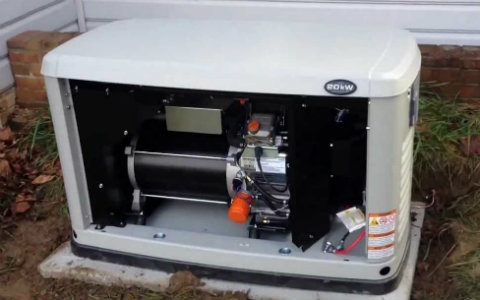During the hot, dry days of August, few of us are thinking about hurricanes or ice storms. But now is exactly when you should consider what you’ll do in the event of a power outage that could occur when storms blow in to Georgia.
Natural gas from Walton Gas is a reliable source of energy for your home no matter the weather. If your home is equipped with a natural gas stove, water heater or gas logs, you’ll be able to cook, have a hot bath and keep warm — even if the power is out.
But what about home appliances or medical equipment needing electricity to operate?
Severe storms can occasionally result in prolonged power outages here in Georgia. Minutes, not to mention hours or days, without power can be crucial to some. If that’s your story, it’s time to think about installing a natural gas standby generator to ensure on-demand, dependable energy when it’s needed.
Here are seven things you should know about a standby generator.
1. No power? No problem!
A stationary standby generator sits in a location beside your home and is permanently connected to your Walton Gas line. It is also connected directly to your home’s electrical panel and can provide uninterrupted backup for days in the event of an electricity outage.
2. Power is restored in seconds.
Within seconds of an electrical outage, a standby generator equipped with an automatic transfer switch automatically starts and restores power. First, the transfer switch disconnects you from your utility. Then the generator turns on automatically and generates electricity that goes through the electrical panel to feed the home, just like the electricity that comes to your home from the electrical grid. When your electric service is restored, the generator automatically shuts down and reconnects your house to the grid. Note: Some manufacturers offer a manual start-up generator for a lower cost.
3. You don’t have to refuel.
You’ll never have to worry about having enough fuel on hand with a generator fueled by the same underground pipelines that bring natural gas to your home.
4. Installation is not a DIY project.
You’ll need to hire a qualified installer to help you assess both your load needs and the logistics of installing a standby generator at your home. To find a qualified contractor, check out this list recommended by Atlanta Gas Light.
5. Know what you need to power.
The size of your generator should be determined by your needs in an emergency, temporary situation. To get an idea of how much electrical capacity you’ll need, use this online size selector calculator. However, be sure to consult a professional for an accurate load analysis before making a generator purchase.
6. Expect to pay $4,000 and up for a whole-house generator.
For the average 2,500-square-foot home, a quality standby generator equipped with an automatic transfer switch starts at around $4,000. Installation is additional. Keep in mind that investing in a natural gas, whole-house generator can add significant value to a home.
7. A portable generator may fit your needs.
If a standby generator is too costly for your budget, a portable natural gas model might suit your needs. Portable models can’t generate enough power to operate many major appliances in the home, however they can provide enough emergency power to charge cell phones and run the refrigerator — which may be all you need in a pinch. Prices (without a transfer switch) start as low as $1,500. Note: A portable generator requires a natural gas outlet (quick disconnect) for its fuel supply and should have a transfer switch for safety and ease of operation. Purchase of these items should also be added to the price of the generator. Learn more about transfer switch options at Global Power Products of Lawrenceville.
Before you buy, compare the benefits of standby and portable generators.This article by Consumer Reports provides details.
A generator is an important investment for protecting your home and family during power outages. If a generator is in your future, schedule installation now before storm season arrives.
